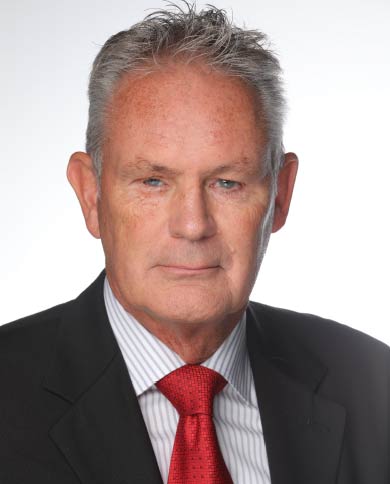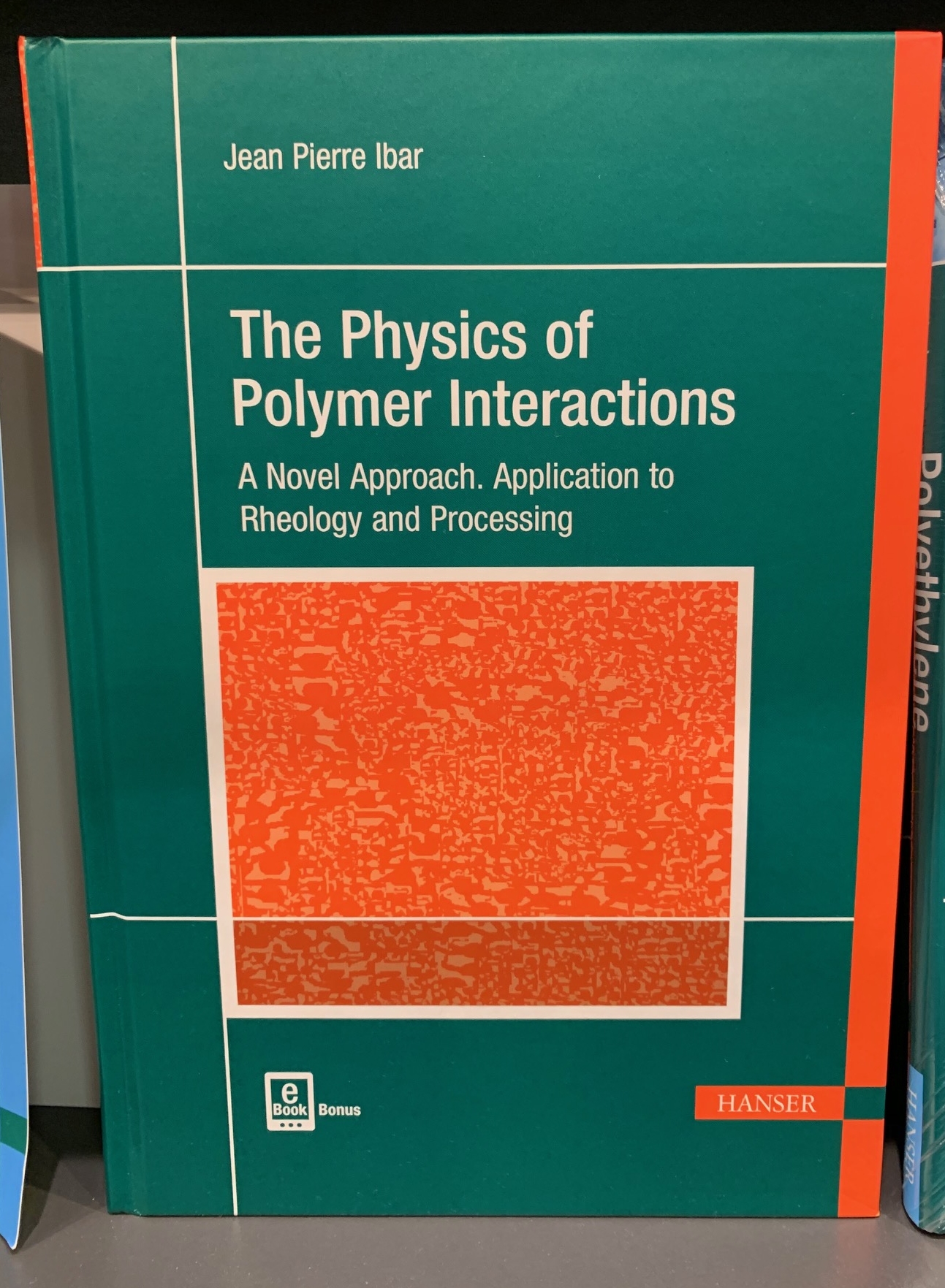Dr. Trevor J. Hutley – serving the polymer industry since 1974
Specialities
Plastics specialist: Formulation, Polymer Materials, Additives, Bioplastics, Compounding, Product development, Polymer processing, Application Development, Technology transfer, Technology commercialisation, Market research, Problem solving, Strategic thinking, Training, Teaching, Mentoring, Feasibility Studies
Dr Trevor Hutley is a recognised polymer expert, an invited conference speaker and moderator, with a passion for teaching, who has broad experience in the global polymer, plastic and petrochemical industry, across many companies and organisations, in many pioneering and complex situations.
An unusual multi-cultural combination of broad and deep technology and science knowledge, combined with finance, marketing, manufacturing and global business experience. An advisor on research & innovation.

Global Polymer Industry Consultant
Research & Innovation Advisor
Technical & Management Consultant
Dr Trevor has broad experience in the global polymer and petrochemical industry, across many companies and organizations, including The British Plastics Federation, Dunlop Engineering Plastics, Dunlop Technology Division, DuPont Engineering Polymers, OneChem.com, The [Saudi] Royal Commission for Jubail & Yanbu, Lotus Engineering, Sipchem, GPCA, Pan Gulf Holding, Dhahran TechnoValley Company, Haward Technology; based in the UK, Switzerland, Hong Kong, 10+ years in the Middle East, and now in Thailand. He was a consultant and advisor to the polymer group of The Kuwait Institute for Scientific Research KISR in Al-Ahmadi; he continues to teach polymer courses in the region; he was a technical and management consultant to Polykem, a Swiss technology development company; and has worked with the University of Liverpool to commercialise new discoveries in polymer chemistry. Now an (independent) principal consultant to the Innovation Practice of DuPont.
His qualifications include a PhD in polymer engineering from Cranfield Institute of Technology, an executive MBA summa cum laude in finance and marketing from BSL (the Business School Lausanne) and a first class BTech in polymer technology from Brunel University. A British citizen, Dr Trevor married Julie née Carman in 1976; they moved to Switzerland in 1989, where their daughters Kelly (1981) and Katie (1986) live.
Dr. Trevor is a pioneering, visionary and creative technical leader. Kaizen is part of his DNA. He works across the professional spectrum, from highly technical activities (research, development, technical service, patent & literature search, product and materials development) through resourcing (sourcing, staffing and recruitment, training, teaching) through to commercial and strategic activities, such as market and business research, and development, technology commercialisation, due diligence, positioning, mergers and acquisitions, building financial and business models.
Dr Hutley is a creative, insightful, analytical, penetrating, inquisitive, strategic, and lateral thinker; and a passionate and capable speaker, with a sharp dry wit.
BOOK REVIEW
The Physics of Polymer Interactions – A Novel Approach
Application to Rheology and Processing
Jean Pierre IBAR
16 June 2022
REVIEW of J P Ibar book – TJH – 16 June 2022
This 430-page book is the first in an expected set of volumes on what Dr Ibar calls “new school polymer physics”, which will describe qualitatively, quantitatively and practically the new approach (paradigm) to polymer physics introduced here in this volume.

THE PHYSICS OF POLYMER INTERACTIONS
A NOVEL APPROACH. APPLICATION TO RHEOLOGY AND PROCESSING
Jean Pierre IBAR
2019, HANSER ISBN 978-1-56990-710-8
This book is not for the faint-hearted. It is both a complex, difficult read, and yet at the same time, exciting – brimming over with new concepts and ideas, almost mind-bending ! Both industrial polymer scientists and academics will find this a text that requires intense concentration, continued focus, great and careful attention to detail, along with plenty of imagination. But for the determined reader, a new vista is available.
The contents and core concepts of this book have been under consideration and development by the author Prof Dr Jean Pierre IBAR for almost 50 years (since 1973). This book provides an answer to the question that he posed 25 years ago:
“Do We Need a New Theory in Polymer Physics?” (1)
This 430-page book is the first in an expected set of volumes on what Dr Ibar calls “new school polymer physics”, which will describe qualitatively, quantitatively and practically the new approach (paradigm) to polymer physics introduced here in this volume, which is only concerned with (already the vast field of) polymer viscoelasticity. Other topics that may also be upturned by this ‘new school of polymer physics’ will include polymer crystallisation (which we will see in a future volume “Dual-phase crystallisation”).
This book consists of several interwoven threads. In one sense, it is the history of the life and thinking of the author, which has been focussed on the impact of vibration on polymer melts. In another sense, it is the explanation of how his experimental work in polymer physics, and his own careful and detailed analysis of the work of others, has highlighted the limitations of classical polymer physics theories, and his development of a new theory that fits all the experimental data. A further thread of this book is the practical implementation – as an entrepreneur and polymer engineer – of his knowledge of how vibration can interact with polymer melts and affect their rheology, behaviour and properties. A final thread is that this book is a compilation of articles previously published in the Journal of Macromolecular Science 2009-2015 on this topic.
The focus of this book is on disentangling polymer chains in the melt. This itself is a true paradigm shift. Dr Ibar explains how the mutual entanglement of polymer molecules in the melt state can be controlled, and substantially kinetically altered, by temperature, shear and vibration. He hints at how this is actually done practically (and which will be the subject of another related volume); and how these disentangled, lower viscosity polymer melts behave, such as processing at temperatures 50 – 100°C below their normal level.
Furthermore, he explains that this disentangled state – which is actually a new state for industrial polymer melts – can be maintained in the extruded pellets (we can think ‘frozen- in disentanglement’), such that their viscosity during subsequent processing – typically injection moulding – is significantly lower.
These ideas are already implemented in the polymer industry, albeit somewhat covertly. So what Dr Ibar is talking about in this book is not just an idea or a theory, but of an implemented innovative technology. This book chiefly explores how his new model of polymer physics and rheology can explain, and help us understand, this disentanglement process (which he names “rheo-fluidification”).
Those readers involved with polymer materials will understand that polymer processing is essentially “man’s struggle to make incredibly viscous materials flow in to the desired shape” [Reviewer’s definition]. The typical high viscosity of these industrial polymers is because above a critical molecular weight Mc (typically 4-10 kg/mole), the melt viscosity is no longer proportional to the molecular weight, but abruptly becomes proportional to the 3.4th power of the molecular weight weight η ∝ M3.4. So, in order to process these viscous polymer melts, machines with huge electric motors (extruders) or massive hydraulic pressure plants (injection moulding machines), both of which operate at high temperatures, have been developed. This changes completely (a paradigm shift) if we can disentangle the polymer melts, and enjoy a significantly lower melt viscosity.
The new model: in essence, what Dr Ibar has done is to change the way we scrutinise polymer molecules: instead of looking at a single polymer molecule in a tube and how it is influenced by its environment (the Reptation model), he considers a more “system” approach, looking at the entire population of polymer molecules: how the conformers (3-bond / 4-atom segments) of all the polymer molecules are categorised by their conformation (c, g, t – cis, trans, gauche) and the amount of intermolecular coupling
(b, intermolecularly bonded, or F, free from intermolecular bonding). This he calls the dual-phase. Above the critical molecular weight for entanglement, his model shows that two co-existing and interactive populations are formed, described as the cross-dual- phase. Best described qualitatively as the entanglement network (phase) and core phase, respectively, and shown in summary, mathematically, by:
[b/F <—> (c, g, t)]1 ⇌ [b/F <—> (c, g, t)]2
Note that the detailed mathematical and statistical treatment of this model will be provided in a further volume “The Grain Field Statistics of Polymer Interactions”, and is not covered in this book).
With this new cross dual phase model, Dr Ibar is able to explain the physics of polymer molecules, and particularly their rheology, and entanglement and disentanglement behaviours.
Within this new model, we also see some very different perspectives on free volume. Free volume arises from the F (free from bonding) conformers, and is no longer seen as a function of two independent variables, Temperature and Molecular Weight. Almost hidden away, passed over in a sentence or two, the author explains that when we consider constant free volume, the classical exponent of molecular weight determining melt viscosity of 3.4 becomes 5.3. That alone is a step-change in understanding!
In the book itself, six pages of Preface provide a historical perspective, and an overview of the new theory of polymer physics. This is followed by 9 pages of Chapter Abstracts, which enable the reader to get an overview and broad perspective of the book. The book proper consists of eight chapters, of very unequal length: chapter 4 at 163 pages, Chapter 5 is 125 pages, whereas Chapter 2 is just 9 pages, chapter 7 just 10 pages. What is helpful, bearing in mind how complex this topic is, and how many new ideas are being introduced, is that almost every Chapter has a summary and conclusions section. Some are short, some are long (in Chapter 6 it is 1 page, in chapter 5 it is 17 pages). What the reader might find troubling is that new ideas and concepts are sometimes introduced in these summaries ! The final Chapter 8 is a Summary of the previous Chapters.
In Appendix A – which might have been developed further, as it is just 1 page – is a list of potential applications of the rheo-fluidification technology.
The broader and more extensive industrial implementation of disentanglement technology might be hindered by the complete paradigm shift introduced here. It requires a re-boot of the thinking of polymer engineering and the design of polymer processing equipment, which have all developed based upon an earlier rigid paradigm that polymers are necessarily high viscosity fluids.
The reviewer believes that achieving disentangled polymer melts is a new disruptive technology that could reconfigure the polymer industry value chain, and bring brand new economic and environmental (lower energy consumption) benefits. Bold engineers who can imagine the potential of what is described in this book will be on a path, along which few have travelled…..
References
(1) Ibar, J.P., Do we need a new theory in polymer physics? J. Macromol. Sci., Polym. Rev. (1997) 37, pp. 389–458
Bioplastics – the past, the dynamic activity and the potential future
This webinar on Bioplastics Is part of the lunchtime Technical Insights webinar series of the PCN [Plastics Consultancy Network PCN.org] and the BPF [British Plastics Federation bpf.co.uk].
It was broadcast by the BPF on Tuesday 26 April 2022 using GoToWebinar, with Paul Baxter, Events Manager of the BPF as the host.
Plastics in Automotive Applications
PCN / BPF Lunch & Learn Webinar
Wednesday 14-April-2021
Plastics in Wire & Cable Applications
PCN / BPF Lunch & Learn Webinar
Thursday 29-April-2021
Polyolefins – The History & Economic Impact



